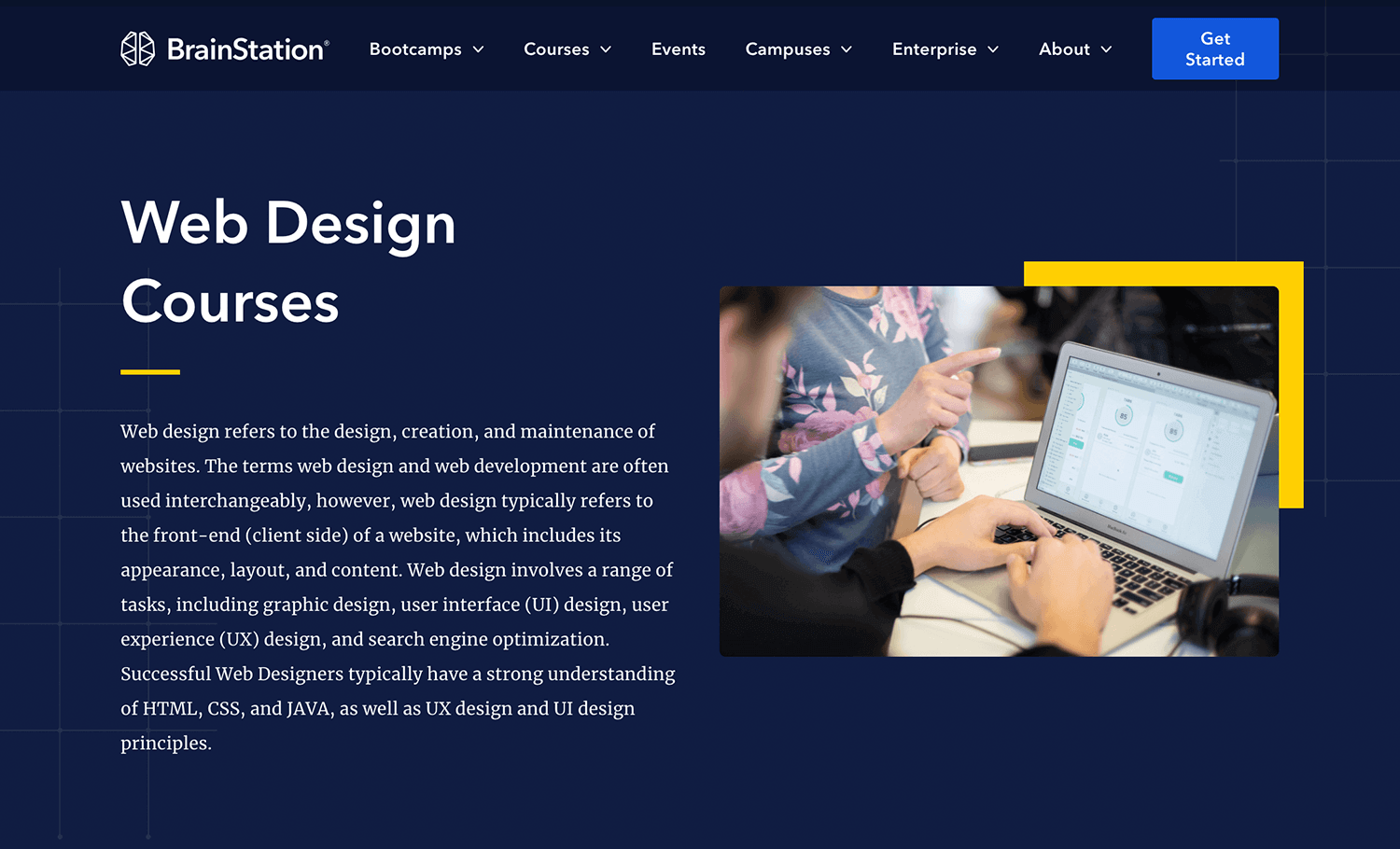How to Successfully Integrate Looks and Functionality in Web Style
When making a site, you need to strike an equilibrium between looks and capability. It's not almost looking excellent; your design needs to additionally serve a purpose and guide users efficiently. By concentrating on simplicity and instinctive navigation, you can create an interesting experience. What elements truly enhance usability while keeping aesthetic allure? Allow's discover the key principles that can bring about an unified mix of elegance and feature.
Comprehending the Significance of Aesthetic Appeals and Performance
When you create a site, recognizing the equilibrium between aesthetics and functionality is vital for producing an effective user experience. An aesthetically appealing site grabs focus, but it's the capability that keeps customers involved. Site visitors will quickly shed rate of interest and leave.Consider your target audience and what draws them in if your website looks excellent yet is hard to navigate. You wish to develop a layout that reflects your brand while ensuring convenience of use. Streamlined layouts, user-friendly navigation, and clear contact us to action can boost both aesthetic appeals and functionality.

Principles of Efficient Website Design
To develop an efficient web layout, you need to abide by a number of key principles that improve both user experience and aesthetic allure. Prioritize simplicity; a tidy layout aids individuals browse quickly. Make use of a constant color design and typography to maintain coherence throughout your site. This promotes experience and trust.Next, assure your style is responsive. Customers gain access to web sites on different tools, so your design should adapt flawlessly. Take note of aesthetic power structure; highlight essential components with positioning, size, or shade to direct users' focus.Finally, incorporate enough white space. It avoids mess and makes web content more absorbable. Keep in mind, effective web style equilibriums visual appeals and functionality, so every layout selection ought to serve a function. By following these concepts, you'll create a website that's not only aesthetically appealing but also user-friendly, eventually keeping visitors engaged and urging them to return.
Prioritizing Individual Experience
When focusing on user experience, you'll intend to begin by understanding what your customers truly require. Simplifying navigating style can make a big difference in how quickly they discover what they're trying to find. Improving visual hierarchy assists assist their interest to the most crucial elements on your website.
Comprehending Customer Requirements
Understanding individual demands is crucial for producing an interesting internet experience that maintains site visitors returning. To attain this, you need to determine the goals and preferences of your target market. Beginning by conducting customer study, like surveys or interviews, to gather understandings on what customers worth most. Take notice of their pain points and difficulties when communicating with similar web sites. This information enables you to tailor your layout, making certain performance lines up with customer expectations. Additionally, think about producing customer characters that stand for various segments of your audience, helping you picture their needs throughout the layout process. When you prioritize understanding customer demands, you produce an internet site that not only looks excellent yet additionally supplies a seamless, delightful experience that fosters loyalty.
Simplifying Navigating Design

Enhancing Visual Hierarchy
A solid aesthetic power structure is essential in guiding individuals through your site and guaranteeing they involve with crucial content. To achieve this, utilize shade, spacing, and dimension tactically. Make essential components like headings larger and bolder than body message, drawing interest instantly. Make use of contrasting colors to highlight calls to activity, urging clicks. In addition, use enough white area to separate areas, making content absorbable and inviting.Consider the flow of info; arrange elements logically, leading customers' eyes from one factor to the next. Use visual hints, like lines or arrowheads, to route attention. By focusing on aesthetic pecking order, you boost individual experience and enhance the probability of conversions, guaranteeing your site is both aesthetically pleasing and functionally effective.
Shade Concept and Its Influence On Functionality
While selecting the ideal shades for your site may look like a small information, it considerably influences usability and customer experience. Color influences exactly how customers perceive information and can enhance or impede navigation. Contrasting shades can assist essential elements stand out, making it much easier for site visitors to discover what they need.Additionally, take into consideration the psychology of colors: blue often influences count on, while red produces seriousness. Understanding your target market can lead your shade selections, assuring they resonate well.Moreover, consistent color systems help build brand name identity, making your site extra remarkable. Be cautious-- also numerous colors can bewilder customers. Stick to a minimal scheme that enhances your web content and preserves clarity.Incorporating access is additionally vital; confirm your color combinations get along for those with visual disabilities. By attentively applying shade theory, you'll boost usability and develop a much more interesting customer experience.
Typography: Harmonizing Style and Readability
Color options established the phase for your internet site, yet typography plays a just as essential function in enhancing customer experience. You want your text to connect clearly while additionally reflecting your brand's character. Begin by choosing font styles that are not only eye-catching but also legible. Sans-serif typefaces often function well for electronic screens, as they're important site less complicated to read at various sizes.Maintain a pecking order by making use of different font style sizes and weights; this overviews individuals with your web content easily. Think about line spacing and letter spacing; as well limited can discourage visitors, while also loose can interrupt the circulation. Limit your typeface selections to two or 3 to maintain the layout cohesive.Finally, always check your typography across different gadgets and browsers. What looks excellent on one display might not on one more. Balancing style with readability assurances that your message reverberates, maintaining your target market involved and notified.
Responsive Layout: Making Looks Work With All Instruments
To assure your web site looks great on any kind of device, you'll need to embrace receptive style concepts. This approach assurances your website adapts to different screen dimensions, providing an ideal user experience. Start by making use of liquid grids and versatile images that scale perfectly. As opposed to fixed dimensions, go with portions and loved one devices, enabling your design to change dynamically.Next, carry out media questions in your CSS. These let you apply various designs based upon device qualities, like screen width. In this manner, you can keep aesthetic charm while ensuring functionality.Don' t forget touch targets; make sure switches and links are simple to tap on smaller sized screens. Prioritize crucial web content, so users can easily browse your website no matter their gadget. By concentrating on these elements, you'll produce an appealing, aesthetically appealing experience that fulfills the demands of all individuals, whether they get on a desktop, smart device, or tablet computer .
Carrying Out Use Screening for Continuous Improvement
To boost your website design, you need to establish clear use goals that align with user needs. By carrying out individual examinations, you can gather important responses on exactly how actual individuals communicate with your site. Assessing these results will certainly aid you make notified improvements and create a more effective user experience.
Specifying Usability Goals
While appearances can draw customers in, defining use goals is crucial for ensuring their experience remains gratifying and seamless. Start by recognizing what you desire individuals to attain on your website (website design london Ontario). Consider their actions, tasks, and requirements. Are they seeking information, purchasing, or registering for a newsletter? Develop clear benchmarks to determine success, like job completion rates or time on job. Prioritize instinctive navigation, accessible content, and responsive layout to boost use. Routinely revisit these objectives as user expectations progress. By defining usability goals, you create a structure for reviewing and boosting your website's efficiency. This emphasis on usability not just improves individual fulfillment however likewise reinforces the general efficiency of your design
Conducting Individual Examinations
Conducting customer examinations is important for refining your web site and guaranteeing it fulfills your audience's requirements. Beginning by identifying your target customers and producing a test strategy that outlines your objectives. Use a mix of qualitative and quantitative approaches, such as surveys, interviews, and task-based monitorings, to collect complete comments. Invite individuals to browse your site while you observe their interactions and note any kind of troubles they encounter. Motivate open dialogue to record their ideas and sensations concerning the style and functionality. Maintain sessions brief and focused, ensuring you cover key areas without frustrating customers. Make certain to document all findings, as this details will certainly be invaluable for making enlightened design decisions that improve both aesthetics and usability.
Examining Test Outcomes
Exactly how can you properly analyze the outcomes of your functionality tests to drive continual renovation? Start by categorizing feedback right into usual styles. Seek patterns in customer behavior that highlight pain points or areas for enhancement. Usage quantitative information, like job completion prices and time on task, to measure use objectively. Do not neglect to consider qualitative understandings from user remarks; they typically disclose underlying problems that numbers can not show. Prioritize one of the most impactful searchings for and create workable items for your style group. Keep in mind, it has to do with repeating-- implement changes, after that test once again. This cycle of screening, examining, and refining aids you balance visual appeals and capability, guaranteeing your internet site meets customer needs successfully linked here while preserving visual charm.
Often Asked Inquiries
How Do I Choose the Right Color Combination for My Internet site?
To pick the appropriate color scheme for your site, consider your brand's individuality, target market, and emotional impact (website design london Ontario). Use color psychology, produce harmony, and warranty readability. Test combinations to see what resonates best with site visitors
What Equipment Can Assist With Internet Style Aesthetic Appeals and Performance?
You can utilize tools like Adobe XD, Figma, and Sketch to improve your website design's aesthetic appeals and performance. These systems supply instinctive interfaces, cooperation attributes, and pre-made layouts to simplify your imaginative procedure and improve your layouts.
Exactly How Can I Integrate Animations Without Jeopardizing Functionality?
To incorporate computer animations without jeopardizing functionality, prioritize refined impacts that enhance user experience. Usage CSS computer animations for smoother interactions, warranty fast lots times, and test on various tools to maintain efficiency while including visual charm.
What Are Typical Mistakes to Stay Clear Of in Web Style Aesthetics?
When developing, prevent cluttered layouts, inadequate color selections, and irregular fonts. Don't neglect mobile responsiveness, as it can alienate customers. Verify your style straightens with your brand name, developing a smooth experience that involves site visitors successfully.
Just how Often Should I Update My Website's Design for Optimum Visual Appeals?
You need to update your site's style every 1-2 years to stay on top of patterns and maintain optimal aesthetics. Regularly renewing visuals helps engage visitors and guarantees your site stays attractive and easy to use. When you make a site, comprehending the equilibrium between visual appeals and performance is vital for producing an effective individual experience. To develop an efficient web style, you need to find more information stick to a number of crucial principles that boost both customer experience and aesthetic allure. Individuals accessibility websites on various tools, so your style needs to adapt effortlessly. When focusing on customer experience, you'll desire to start by recognizing what your users truly need. Begin by carrying out individual research, like interviews or surveys, to gather insights on what customers worth most.